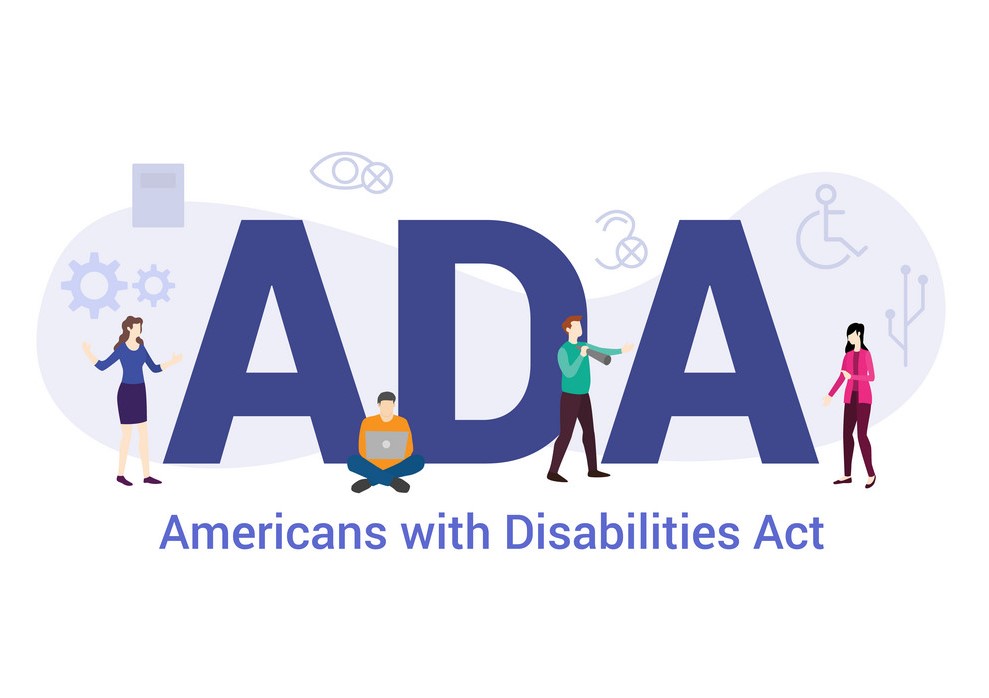
Fighting For Your Child’s Rights

The beginning of school across America has many parents remaining concerned about the success of the year ahead. It’s been widely acknowledged that the level of education being provided to students in 2020 is not likely meeting typical academic standards. And it may take years before we see the costs to this generation’s learning and to the detrimental developmental affects that may result from a remote education.
There are risks for almost all kids. But for students with special needs, the shift to online learning created more roadblocks in what is already a long line of barriers for them. Simply put, it’s even harder than usual to get access to the services required for their education.
The Individuals with Disabilities Education Act (IDEA), signed into law by President Gerald Ford in 1975, is an extension of the Civil Rights Act. Recognizing that it is not only wrong to deny access to public school based on race, it is equally wrong to deny children with disabilities equal access to an education. And though IDEA sets minimum standards for every state to uphold, enforcing them isn’t so easy and each year fewer than half the states are in compliance with the federal law.
The fact is, IDEA is the only federal law that is left to citizens, i.e. parents, to uphold. School districts have come to learn that non-compliance with the law typically costs them nothing, because apart from complaints or lawsuits from families, no one enforces these laws. The common consequence of not providing equal education is only that they must adhere to the law moving forward. In the meantime, the hundreds of pages of rules and constantly updated regulations make it easy for schools to hide the ball under the cup while parents and advocates struggle to stay abreast of the services and accommodations to which their child is entitled.
States are not uniform in general when it comes to public education. The federal government has limited power with issues related to school funding, leaving disparities between states. Some school districts make calculated decisions on what they’ll provide, often with little regard for the children in their schools or for the law. The states that spend more money on education tend to have fewer lower-income students, so the poorest people in the country are receiving the fewest services. When the money isn’t there, it’s kids with disabilities that are typically the ones to fall through the cracks.
Until schools are required to uphold mandates to provide free appropriate education tailored to individual disabled students’ needs, it will remain the job of parents to stay educated on what their child is entitled to and to work hard to be sure that they’re getting it. And with another year ahead of potentially online or hybrid learning, the work will be that much harder. Parents of children with special needs should contact their school early and often.
Back to School

With summer waning and temperatures beginning to cool, many American families are preparing for the start of a new school year. Typically, a new school year brings a certain amount of excitement and anticipation. Shopping for supplies and new clothes; meeting new classmates, making new friends, and meeting new teachers are all among the rituals that many kids and their parents look forward to each fall. It’s a time for renewal and a fresh start.
But like so many other things COVID has taken from us, the start of this school year is faced with dread instead of joy. So many questions remain about the safety of returning to a physical classroom, and for how long that might last, no matter where you live. For those who will return to the classroom, what kinds of accommodations will be made and how will they affect learning? For those who are at home, what improvements, if any, will there be to virtual learning? All that ambiguity leads to stress and that’s a problem faced by everyone involved.
Now apply all that uncertainty to children with special needs and their parents. Most children thrive on structure, but children with disabilities often can’t function without it. And as teachers, students, and parents learned this past spring, learning remotely is not always an easy or successful replacement for in-class learning. In fact, educators and parents discovered that a great many children, particularly those with special needs, lost ground on their developmental progress and experienced sadness, increased anxiety, and an uptick in frustration and aggressive behavior.
The detriments of being educated at home aren’t specific to children with special needs, but the loss of individual accommodations and special services are. Furthermore, the isolation of being at home has had a more profound affect on these kids. Children with special needs often don’t have many friends outside of school and a great deal of their social life is school. For some, their teacher is their closest friend. Being deprived of that connection isn’t a gap that a parent can easily bridge.
For now, some schools will return to classrooms with required and necessary changes to their typical practices in order to adhere to safety guidelines and others will be remote. Schools that will remain online are working to make improvements.
Ultimately parents will continue trying to fill a significant role that they weren’t trained or prepared for. And for those who have a child with a disability, many with multiple children, things will fall through the cracks.
So how should parents approach what looks to be another difficult year of school for their children? Experts say that structure is key. Get up at the same time every day. Create schedules for each day and attempt, within reason, to replicate a typical school day. If your child isn’t getting required services, push the school to facilitate them via online instruction. Parent advocacy and support groups offer online social engagement for kids; join those groups if your children don’t have other friends.
And go buy those supplies! It is after all, still a new beginning.
30 Years of the ADA

Anyone who has ever used a ramp at an airport to roll luggage, or at a mall to push a stroller, has benefited from the American with Disabilities Act (ADA). But as helpful and necessary as those ramps may seem for all, they wouldn’t exist had they not been installed specifically to accommodate those using wheelchairs.
This summer marks the 30th anniversary of the Americans With Disabilities Act, a landmark civil rights law, signed by President H.W. Bush in July of 1990. An extension of the 1964 Civil Rights Act, the ADA made definitive the rights of those who are born with or who experience a disability during their lifetime. The law prohibits discrimination in the workplace and in schools, and by both local and state governments. It also provides standards for privately owned businesses and commercial facilities, allowing those with disabilities the ability to lead full and productive lives.
The Americans with Disabilities Act ensures that individuals with disabilities have access to transportation, public accommodations, and communications. With multiple Titles in the law it establishes the requirement for both public and privately owned, leased or operated facilities – like hotels, restaurants, retail stores, doctors’ offices, day care centers, sports stadiums, movie theaters and more – to comply with the ADA measures. Minimum standards have been set that remove barriers in existing buildings where it is reasonable to achieve, and ensure that accessibility measures are planned and installed in all new construction. Besides supporting mobility, businesses also need to take steps necessary to communicate effectively with those with hearing, speech or vision disabilities.
Living with a disability can be profoundly challenging. Whether mental or physical, obstacles present themselves to those who suffer that just don’t exist for the general population. And being encumbered often causes limitations that can lead to lack of independence, depression and social isolation. For some, limitations also create financial hardship. Navigating life while overcoming a constant roadblock is a constant struggle. The ADA was signed into law in an attempt to level the playing field.
But passage of the ADA, like many other civil rights laws, was hard fought and took years to achieve. Prior to becoming a law, individuals with disabilities were routinely denied access to education and jobs. Schools cited a lack of facilities that would accommodate students with intellectual or physical disabilities. Businesses did the same, which left qualified individuals uneducated and unemployed. Today all public schools must provide an appropriate education for all students in their district and all government offices must provide the structural facilities necessary for equal access. Private schools and businesses are responsible to do the same.
But even with the Americans with Disabilities Act, barriers remain for some who live with a disability. Access to the internet has come to the forefront during the COVID crisis as many people are working from home and shopping from home, but what’s not clear is how far the ADA goes towards accommodating these needs. Expect to see court challenges on this front in the coming years.
Though work remains, 30 years of the ADA is still something to celebrate!
Hope Trust serves clients throughout the United States.

